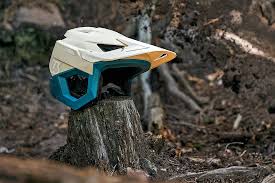Blog
Eco-Friendly Helmets: Sustainable Choices for Riders
Eco-Friendly Helmets: Sustainable Choices for Riders
As environmental awareness grows, motorcyclists are increasingly seeking eco-friendly options, including sustainable helmets. Traditional helmets, while effective at providing protection, often rely on non-renewable materials and energy-intensive manufacturing processes. Eco-friendly helmets address these concerns by using sustainable materials, ethical manufacturing practices, and designs that minimize environmental impact.
In this article, we’ll explore the rise of eco-friendly helmets, their benefits, and the top sustainable choices for riders in 2024.
Why Choose an Eco-Friendly Helmet?
Switching to an eco-friendly helmet benefits both riders and the planet. Key reasons include:
1. Reduced Carbon Footprint
- Eco-friendly helmets are made with sustainable materials, minimizing the carbon emissions associated with production.
2. Use of Renewable Resources
- Many sustainable helmets utilize plant-based fibers, biodegradable components, or recycled materials.
3. Longevity and Durability
- High-quality materials ensure that eco-friendly helmets last longer, reducing waste.
4. Ethical Manufacturing
- Brands prioritize fair labor practices and environmentally responsible production methods.
5. Meeting Rider Expectations
- Today’s eco-conscious riders demand gear that aligns with their values without compromising on safety or performance.
Features of Eco-Friendly Helmets
1. Sustainable Materials
- Bamboo Fiber Liners: Biodegradable and moisture-wicking.
- Recycled EPS Foam: Repurposed polystyrene foam reduces waste.
- Cork Shells: A renewable material that offers excellent impact resistance.
- Natural Resin Coatings: Replace synthetic coatings with eco-friendly alternatives.
2. Energy-Efficient Manufacturing
- Renewable energy sources power production facilities.
- Techniques like 3D printing reduce material waste during manufacturing.
3. Biodegradable Components
- Helmets designed to break down naturally at the end of their lifecycle reduce landfill contributions.
4. Recyclable Packaging
- Eco-friendly helmet brands often use recycled or biodegradable packaging materials.
Top Eco-Friendly Helmet Brands in 2024
1. Roof Helmets
- Eco-Friendly Focus:
- Recycled EPS liners.
- Renewable energy-powered factories.
- Notable Model: Roof RO200 Carbon
- Lightweight carbon shell.
- Recycled interior liners.
- Why Riders Love It:
- Combines sustainability with a sleek design and high performance.
2. Veldt Helmets
- Eco-Friendly Focus:
- Handcrafted helmets using sustainable materials.
- Customization to reduce overproduction waste.
- Notable Model: Veldt Classic
- Modular design reduces material needs.
- Bamboo interior liners.
- Why Riders Love It:
- Veldt helmets offer unique, artistic designs with eco-conscious construction.
3. Hedon Helmets
- Eco-Friendly Focus:
- Natural leather trims and biodegradable liners.
- Low-waste manufacturing processes.
- Notable Model: Hedon Heroine
- Retro style with sustainable components.
- Handmade for quality and reduced emissions.
- Why Riders Love It:
- Combines vintage aesthetics with modern sustainability.
4. Nexx Helmets
- Eco-Friendly Focus:
- Use of renewable and biodegradable materials in shell construction.
- Factories powered by solar energy.
- Notable Model: Nexx X.Vilitur Carbon
- Lightweight, eco-friendly carbon composite shell.
- Advanced ventilation system.
- Why Riders Love It:
- Ideal for touring riders seeking an environmentally responsible option.
5. Ruroc Atlas
- Eco-Friendly Focus:
- Recycled and biodegradable materials in helmet design.
- Carbon-neutral manufacturing initiatives.
- Notable Model: Ruroc Atlas 4.0
- Sustainable carbon fiber shell.
- Noise-reducing design for comfort.
- Why Riders Love It:
- Combines bold graphics with eco-friendly engineering.
How to Identify an Eco-Friendly Helmet
1. Check the Materials
- Look for terms like “recycled,” “biodegradable,” or “natural fibers” in the product description.
2. Look for Certifications
- ISO 14001: Indicates environmentally responsible manufacturing.
- Cradle to Cradle Certification: Ensures the product can be recycled or biodegraded.
3. Research the Brand
- Visit the manufacturer’s website to learn about their sustainability practices.
4. Inspect the Packaging
- Eco-friendly brands often use recycled, recyclable, or biodegradable packaging.
Benefits of Eco-Friendly Helmets
1. Environmental Protection
- Reducing reliance on non-renewable resources lowers the ecological impact.
2. Better for Sensitive Skin
- Helmets with natural liners like bamboo are hypoallergenic and moisture-wicking, offering extra comfort.
3. Supporting Ethical Practices
- Many eco-friendly brands prioritize fair labor and sustainable business operations.
4. Aesthetic Appeal
- Eco-friendly materials like cork or natural resin often give helmets a unique, stylish appearance.
Challenges of Eco-Friendly Helmets
1. Higher Cost
- Sustainable materials and ethical manufacturing often result in higher prices.
2. Limited Availability
- Fewer brands currently offer eco-friendly helmets, and availability may vary by region.
3. Lower Availability of Features
- Some eco-friendly helmets may not yet include advanced features like integrated Bluetooth.
Future Trends in Eco-Friendly Helmet Design
1. Bio-Based Plastics
- Helmets made from plant-derived plastics are gaining traction as a sustainable alternative to petroleum-based plastics.
2. Fully Recyclable Helmets
- Manufacturers are working toward 100% recyclable designs, ensuring every component can be reused or biodegraded.
3. Carbon-Neutral Manufacturing
- More companies are pledging to offset carbon emissions by adopting renewable energy and sustainable production methods.
4. Sustainable Accessories
- Eco-friendly visors, straps, and padding will soon match the sustainability of helmet shells.
How to Extend the Life of an Eco-Friendly Helmet
To maximize the lifespan of your helmet and reduce waste:
- Regular Maintenance: Clean the interior and exterior using mild, eco-friendly cleaning products.
- Proper Storage: Keep your helmet in a cool, dry place away from direct sunlight.
- Timely Replacement: Replace the helmet after 5–7 years or after an impact.
- Recycle or Donate: Check with manufacturers for recycling programs or donate undamaged helmets to training schools.
Conclusion
Eco-friendly helmets represent the future of motorcycle safety gear, combining advanced protection with sustainable practices. As more brands embrace renewable materials and ethical manufacturing, riders now have options that align with their environmental values without compromising on performance.
Whether you choose a bamboo-lined Veldt Classic or the carbon-neutral Ruroc Atlas 4.0, an eco-friendly helmet is a smart investment for both your safety and the planet. By supporting these sustainable innovations, you can help drive the industry toward a greener, more responsible future.




